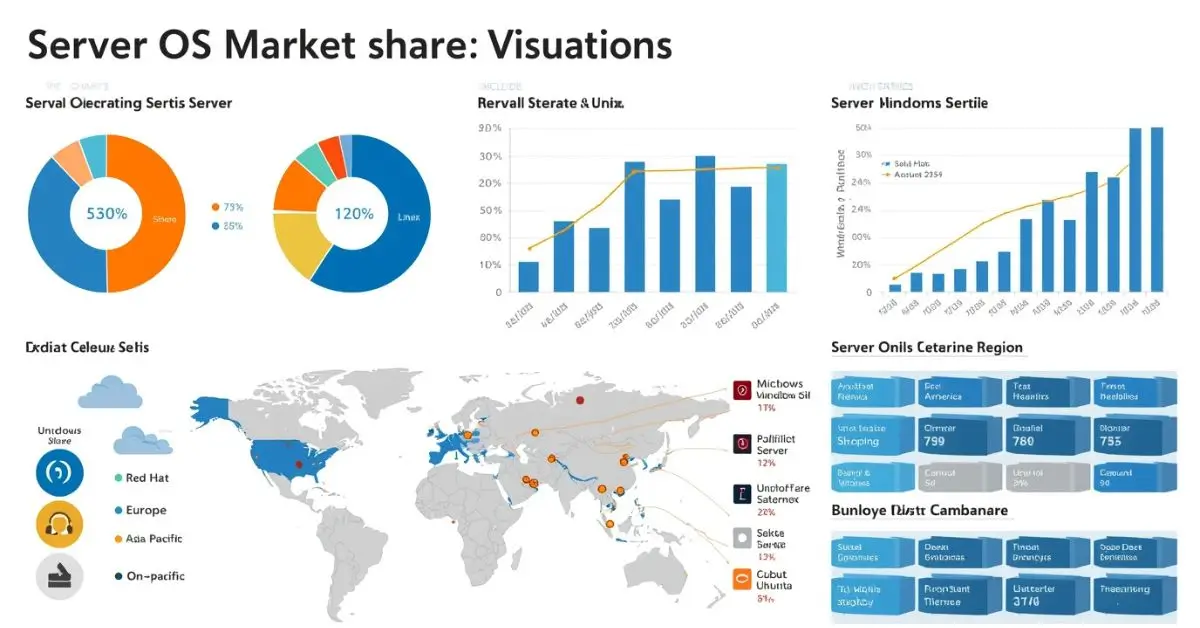BUSINESS
What’s the Price of 10K Gold Today?

what’s the price of 10K gold today, you’re not alone. As one of the more affordable options among karat gold jewelry, 10 karat gold offers a perfect blend of value, durability, and style. But determining the current cost isn’t just about noting the daily gold price per gram—it requires understanding gold purity, market trends, and how the global economy influences precious metals. Let’s dive deep into the world of 10K gold to uncover what it’s worth in 2025.
Understanding 10K Gold and Gold Purity
When we talk about 10K gold, we’re referring to gold that’s 10 parts pure gold and 14 parts alloy—meaning it contains about 41.7% pure gold. Jewellers often choose 10 karat over higher karats like 14K or 18K for everyday items because the extra alloy metals such as copper, nickel, or silver make the pieces stronger and more scratch-resistant. Still, compared to 14K or 24K, 10K gold is more budget-friendly, making it a solid choice for those seeking a good balance between beauty and cost.
The purity of gold directly influences its value. A troy ounce of pure gold (24K) is worth substantially more than the same weight of 10K gold due to the difference in metal content. Spot gold prices, which represent the current global average gold market price, only concern pure gold. To figure out how much 10K gold is worth, you multiply the spot price by 41.7% and then by the total weight in grams or troy ounces. This calculation yields the melt value—which is what the metal is worth if melted down, not its retail price in jewelry form.

Factors Affecting the Current Gold Price
Gold prices are influenced by a complex mix of factors tied to precious metals markets and global financial trends. For example, if the US Dollar weakens, gold becomes cheaper for foreign buyers, pushing its price higher. Economic uncertainty—such as rising inflation, geopolitical tensions, or financial crises—also increases investor demand for safe-haven assets like gold. On the flip side, when the economy is stable and interest rates are high, gold prices may cool off.
Inflation plays a major role in pushing up gold values. Since gold traditionally serves as a hedge against rising prices, purchasing power risk prompts investors to buy bullion or jewelry when inflation is strong. As central banks adjust interest rates to combat inflation, those moves not only affect bonds and currencies—they also shift investor sentiment and drive gold prices up or down.
Calculating the Value of 10K Gold Jewelry
Are you trying to calculate how much your 10K gold jewelry is worth? Here’s a simple breakdown:
- Weigh your item in grams or troy ounces.
- Find the current gold spot price in USD per gram. (This changes daily according to the precious metals market.)
- Multiply by 0.417 (the pure gold percentage in 10K).
- Multiply by the weight of your item.
For instance, assume the spot price is $65 per gram. For a 5-gram 10K ring:
0.417 × 65 × 5 = approximately $135 melt value.
But don’t forget this is the scrap or melt value. Jewelers or buyers also consider workmanship, brand, resale demand, and market competition, influencing the final price.
10K vs. 14K and 18K Gold: Price Comparison
The main difference between 10K and higher purity karats is right in the value per gram. Because 14K contains ~58.3% pure gold and 18K ~75%, buyers pay significantly more per gram. If the spot rate is $65/g, a gram of 14K would be about $38, while 18K would be around $49. Compared to that, 10K’s melt value of roughly $27/g offers substantial savings, particularly when shopping for bulkier pieces like chains, bracelets, or bangles.
That said, higher karats tend to hold value better long term and feel richer in color. Jewelry collectors and investors may opt for 14K or 18K, while 10K gold remains a budget-conscious favorite for daily wear and when purchasing pieces with heavy metal content.
Scrap Gold Value and Selling 10K Gold
When selling 10K gold, especially to a pawn shop or scrap buyer, they evaluate based on melt value. You may get offers ranging from 90% down to 60% of that calculated melt value—these buyers need to account for refiners’ fees, overheads, and profit margins. So, if your melt value is $135, you might be offered between $80 and $120. To maximize returns, compare quotes from multiple dealers, understand the spot price on the transaction date, and ask for transparent pricing breakdowns.
Online bullion dealers also buy scrap gold and usually pay closer to the melt value compared to walk-in buyers. Some even offer real-time price updates and guided shipping for your jewelry.

Is It Better to Invest in 10K Gold?
Some investors prefer 24K bullion or high-karat gold jewelry, but 10K gold has its advantages. Because of lower upfront costs, you can own physical gold in affordable quantities. Jewelry in 10K brings aesthetic appeal and wearability, and if acquired as second-hand pieces or from reputable dealers, may even appreciate in value if gold prices trend upward.
Yet, keep in mind that if you primarily want investment-grade metal, higher purity gold or bullion coins/bars are a purer store of value. Still, 10K remains a smart compromise: wearable and budget-friendly, with some upside potential in precious metals appreciation.
Where to Buy or Sell 10K Gold
Looking to buy or sell? Here are your best options:
- Local jewelry stores often carry 10K rings, chains, and earrings. You’ll pay retail markup, but the quality and service are usually reliable.
- Online dealers sometimes offer better pricing and a wider range. Just ensure they’re reputable (look for Trustpilot reviews, BBB accreditation, etc.).
- Pawn shops and scrap buyers are easy for selling, but often underpay. They offer quick cash, but compare multiple offers to get the best deal.
- Bullion dealers and refineries usually pay melt value minus minimal fees—these can be the best option if you’re purely selling metal content.
How to Assess 10K Gold Jewelry Condition
Condition impacts value. Jewelry in good shape—without dents, deep scratches, or missing stones—can fetch more when sold. Hallmarks and certifications (like assay markings, brand engravings, or independent gem certificates) also validate authenticity and may raise resale value. Polishing, professional appraisal, and repair before selling big-ticket pieces can be worthwhile.
Daily Gold Price Tools and Spot Rates
Smart buyers and sellers keep an eye on live gold rates using gold price calculators and dedicated precious metals tracking platforms. These tools show spot price per ounce or gram, historical charts, and even adjust for karat purity automatically—giving you instant melt value estimates. Since gold markets trade continuously worldwide, keep in mind that weekend prices may be delayed or static until exchanges reopen.
Is 10K Gold Good Quality?
Despite its lower purity, 10K gold is still considered “real gold.” With 41.7% pure metal content, it’s durable, tarnish-resistant, and perfect for jewelry that’s meant to last. Many people worry about nickel allergies—but reputable manufacturers often create hypoallergenic alloys. If you have metal sensitivities, always check the alloy composition or choose pieces labeled nickel-free.
FAQs
1. How much is 10K gold worth per gram today?
You calculate the melt value by taking today’s spot price and multiplying by 0.417. For example, if the spot price is $65 per gram, 10K gold is worth about $27 per gram in pure metal content.
2. Is 10K gold real gold?
Yes. Although it’s only 41.7% pure, 10 karat gold is considered genuine gold under U.S. federal law. The remainder consists of alloy metals that enhance durability.
3. Why is 10K gold cheaper than 14K or 18K?
Because it has less pure gold content. 14K contains about 58.3%, and 18K around 75%. Since gold is sold based on purity and weight, lower karat equals lower cost.
4. How do I calculate the value of 10K gold jewelry?
Weigh your item, find the current spot price per gram, multiply by 0.417 (gold purity), then multiply by the weight. That gives you its scrap value.
5. Where can I sell 10K gold for the best price?
Bullion dealers and online refiners often pay closer to melt value. Pawn shops and local scrap buyers tend to offer less. Getting written quotes from multiple buyers helps you maximize returns.
6. Does 10K gold hold its value over time?
While higher karat gold holds value slightly better due to purity, 10K still tracks with overall gold price trends. It remains durable and wearable, making it a solid everyday precious metal option.
Conclusion
When asking “what’s the price of 10K gold today?”, you’re really exploring how pure gold value intersects with jewelry design, affordability, and market conditions. By understanding gold purity, spot price trends, and valuation tools, you can confidently assess melt value and negotiate fair retail or sale prices.

BUSINESS
Server OS Market Share Analysis for IT Leaders

When it comes to powering modern businesses, understanding server OS market share isn’t just a technical curiosity—it’s a strategic advantage. Whether you’re a CIO planning infrastructure upgrades, a DevOps engineer choosing the next cloud stack, or a student researching enterprise IT, knowing which server operating systems dominate the market helps shape better decisions.
But here’s the real question: Why are some operating systems growing while others are fading away? And what do the numbers say about Linux, Windows Server, and Unix in 2025? Let’s dive into the data, trends, and predictions that define the server OS landscape today.
The Global Server OS Market share Report
The global server OS market share report shows that operating system dominance shifts with technological changes. From the early dominance of proprietary Unix systems to the rise of Linux server OS adoption, we’ve seen consistent evolution.
Today, enterprises balance between open-source flexibility, commercial support, and cloud-native compatibility. Key highlights in 2025 include:
Server Operating System Usage Statistics in 2025
Latest server operating system usage statistics reveal fascinating patterns:
- Linux powers roughly 70% of global web servers, largely due to cost-effectiveness and developer community support.
- Windows Server holds around 20% of the market, with strength in hybrid enterprise deployments.
- Unix and BSD derivatives account for less than 5%, but retain loyal users in mission-critical systems.
- Cloud-native OS distributions like Container-Optimized OS and CoreOS are gaining traction in specialized workloads.
One sysadmin recently tweeted: “Every migration project we’ve done this year ended up on Linux. Stability, cost savings, and performance make it the default choice.”
Linux Server OS Adoption
When we talk about Linux server OS adoption, we’re not just discussing a technology choice—it’s a cultural and economic movement. Companies like Netflix, Meta, and Google run massive infrastructures on Linux.
Why?
- Cost savings: Open-source eliminates licensing fees.
- Flexibility: Supports customization and container orchestration.
- Security: Rapid community-driven patching.
Distributions like Ubuntu Server and Red Hat Enterprise Linux continue to dominate, each catering to different segments. Ubuntu appeals to startups and developers, while Red Hat thrives in enterprise IT.
Windows Server Market Share
The Windows Server market share may be smaller than Linux, but it holds a powerful niche. Enterprises running Microsoft ecosystems—like Exchange, SharePoint, and Azure Active Directory—depend heavily on Windows Server.
Key strengths include:
- Seamless integration with Microsoft 365 and Azure.
- Strong enterprise-grade support and compliance certifications.
- Familiarity for IT teams with existing Microsoft expertise.
Despite challenges, Windows Server remains indispensable in hybrid cloud deployments where companies want a mix of Linux and Microsoft environments.
Unix Server OS Trends
While Unix server OS trends show a slow decline, the technology is far from extinct. AIX, Solaris, and HP-UX continue to power critical banking, telecom, and government systems.
Why are some organizations still using Unix?
- Stability over decades.
- Certified applications that aren’t easily portable.
- Strong vendor support in regulated industries.
That said, the high licensing costs and limited innovation compared to Linux mean Unix will likely remain niche.
Cloud Server OS Comparison
In 2025, the cloud server OS comparison is one of the most dynamic aspects of IT infrastructure. Cloud providers like AWS, Google Cloud, and Azure optimize their own OS distributions for performance.
- AWS Linux 2025: Tuned for EC2 performance, with native integration.
- Google’s Container-Optimized OS: Lightweight, built for Kubernetes workloads.
- Microsoft Azure Stack HCI: Combines Windows Server roots with hybrid flexibility.
The takeaway? Cloud-native operating systems are reshaping how we think about traditional OS dominance.
Enterprise Server Operating Systems: What Businesses Use Most
When we look at enterprise server operating systems, the decision often balances innovation with reliability. Large corporations don’t always chase trends—they prioritize long-term stability.
Key choices in enterprises:
- Red Hat Enterprise Linux: Strong commercial support and certifications.
- Windows Server: Integration with Microsoft enterprise software.
- Ubuntu Server: Popular in development and DevOps pipelines.
Budget, staff expertise, and compliance requirements heavily influence the final choice.
Datacenter OS Popularity
Datacenters remain the backbone of IT, and datacenter OS popularity reflects how businesses run workloads at scale. Here’s what’s trending:
- Linux leads for scalability and open-source cost benefits.
- Windows Server dominates in Microsoft-centric environments.
- Unix lingers in legacy datacenters but rarely sees fresh adoption.
With edge computing growing, lightweight Linux distributions are particularly popular in micro-datacenter deployments.
Red Hat vs Ubuntu Server Share
The battle of Red Hat vs Ubuntu server share highlights different philosophies.
- Red Hat Enterprise Linux (RHEL): Enterprise-grade, with strong vendor backing, certifications, and long-term support.
- Ubuntu Server: Developer-friendly, widely adopted in startups, cloud-native apps, and container workloads.
In market share terms, Ubuntu dominates cloud deployments, while Red Hat excels in Fortune 500 enterprises.
Server Software Industry Trends
The server software industry trends in 2025 reflect the shift toward:
- Containerization: Kubernetes and Docker driving lightweight OS usage.
- AI-ready infrastructures: Optimized OS versions for machine learning workloads.
- Zero-trust security: Demand for OS-level hardening.
- Hybrid and multi-cloud: Businesses need OSes that integrate across environments.
These trends make OS selection less about loyalty and more about workload optimization.
Pros and Cons of Leading Server OS Options
| Server OS | Pros | Cons | Best Fit |
|---|---|---|---|
| Linux | Free, customizable, secure, scalable | Steeper learning curve for some admins | Cloud, web hosting, modern enterprises |
| Windows Server | Strong enterprise integration, Azure synergy | Licensing costs, heavier resource use | Hybrid enterprises, Microsoft shops |
| Unix | Rock-solid stability, legacy support | Expensive, less innovation | Banking, telecom, regulated sectors |
| Cloud-native OS | Lightweight, optimized for containers | Limited outside cloud ecosystem | Cloud-first businesses, DevOps |
The Future of Server OS Market Share
Looking ahead, we’ll likely see:
- Continued dominance of Linux in cloud and datacenter markets.
- Steady but reduced role for Windows Server in enterprises.
- Unix shrinking into a legacy niche.
- Growth of container-optimized and AI-tailored operating systems.
For businesses, the message is clear: adapt your server OS strategy to match workload demands, not just historical preference.
FAQ’s
What is the most popular server operating system in 2025?
Linux remains the most widely used server OS worldwide, especially in cloud and web hosting environments.
How does Windows Server market share compare to Linux?
Windows Server holds around 20% of the market, strong in enterprise use cases, but Linux leads overall with nearly 70%.
Why is Unix still used if it’s declining?
Unix systems continue to run critical workloads in banking, telecom, and government because of their stability and long-standing certifications.
Which OS should small businesses choose?
For cost and flexibility, Linux-based solutions (like Ubuntu Server) are often the best choice. Small businesses deeply tied to Microsoft tools may prefer Windows Server.
Conclusion
The server OS market share tells a story of evolution, competition, and adaptation. From Linux’s unstoppable growth to Windows Server’s loyal enterprise base and Unix’s quiet persistence, the numbers reflect broader IT trends.Whether you’re running a global data center or a startup cloud deployment, your OS choice should align with budget, performance, and future growth.
BUSINESS
What Is Shein Saver and How Can It Save You Money?

If you shop at Shein often, you’ve probably noticed a “Shein Saver” option at checkout and wondered what it means. For budget-conscious shoppers, deal hunters, and fashion lovers, knowing what is Shein Saver can help you save money, enjoy perks, and make smarter purchasing decisions. This guide breaks it all down—how it works, its benefits, and whether it’s worth it for your shopping habits.
What Is Shein Saver and How Does It Work?
The Shein Saver program is Shein’s way of helping shoppers reduce costs by offering cheaper or sometimes free shipping when customers choose a slower delivery option. Instead of paying extra for express delivery, Shein Saver rewards you for being flexible with shipping times.
- Lower shipping fees compared to standard checkout options
- Occasional bonus perks, such as coupons or points
- Eco-conscious delivery by grouping shipments together
Think of it as Shein’s budget-friendly alternative to fast shipping, aimed at frequent customers and savvy buyers.
Shein Saver Benefits vs Regular Shein Shopping
| Feature | Regular Checkout | Shein Saver Option |
|---|---|---|
| Shipping Speed | Standard/Express | Slower, consolidated |
| Cost | Higher | Lower or Free |
| Coupons & Discounts | Limited | Often Included |
| Eco-Friendly Packaging | Not prioritized | More optimized |
By choosing Shein Saver, customers often unlock extra Shein coupons and discounts, while also saving on shipping.
Key Shein Saver Membership Benefits
While not a paid subscription, Shein Saver acts like a mini loyalty program inside the platform:
- Cheaper delivery options – Save on shipping fees
- Shein free shipping options – Sometimes available through Saver
- Bonus Shein points and cashback – Redeemable on future purchases
- Sustainable shopping perk – Reduced packaging footprint
These small perks make a big difference for regular Shein buyers.
Is Shein Saver Worth It for Frequent Shoppers?
If you’re a frequent Shein customer, Shein Saver is almost always worth selecting. While you may wait a bit longer for delivery, the membership benefits include consistent savings and the chance to stack Shein deals and promo codes with your Saver orders.
For casual shoppers who only place one or two orders a year, the impact may be less noticeable—but for loyal customers, the Shein rewards system adds up quickly.
How to Join the Shein Saver Program
Unlike premium memberships, you don’t need to sign up separately for Shein Saver. Instead:
- Add items to your cart
- Proceed to checkout
- Look for the “Shein Saver” option under shipping methods
- Select it for lower or free shipping
That’s it! No subscription fees, no hidden costs.
Shein Saver Free Shipping Explained
One of the most common questions is: Does Shein Saver include exclusive discounts or free shipping?
- Yes, sometimes. Depending on your location, cart value, and promotions, Shein Saver can reduce shipping costs significantly or make it free.
- However, you trade faster delivery for cost savings.
This flexibility helps Shein balance logistics while rewarding budget-conscious customers.
Shein Saver vs Shein Points System
Many shoppers confuse Shein Saver with the Shein loyalty program or points system. Here’s the difference:
- Shein Saver → A checkout option for cheaper shipping + occasional perks
- Shein Points System → Rewards earned from reviews, app activities, or purchases, redeemable as discounts
You can actually use both together to maximize savings.
Shein Saver Reviews from Real Customers
Customer feedback shows mixed reviews, often based on delivery expectations:
- Positive: “Saved me money on shipping and got a coupon with my order!”
- Neutral: “It took longer than expected, but I saved a few pounds.”
- Negative: “Not ideal if you need clothes fast for an event.”
Overall, Shein Saver works best for shoppers who value savings over speed.
Common Mistakes to Avoid With Shein Saver
- Expecting fast delivery – it’s intentionally slower
- Confusing it with a paid Shein membership
- Forgetting to stack coupons, points, and Saver benefits
By being mindful, you can get the maximum Shein discount membership advantages.
Expert Insights
To ensure accuracy, here are trusted references about Shein’s shopping features:
- Business Insider – Shein shipping & saver options explained
- The Guardian – Shein’s growth and customer perks
- BBC – Fast fashion logistics and consumer impact
These sources confirm Shein’s Saver option is part of its broader strategy to attract repeat customers while balancing logistics costs.
FAQ’s
What is Shein Saver and how does it work?
It’s a shipping option that reduces costs by consolidating deliveries, sometimes offering free shipping or bonus perks.
Is Shein Saver worth it for frequent shoppers?
Yes. If you buy often, the savings and perks outweigh the slightly slower delivery.
How to join Shein Saver program?
You don’t join—it appears automatically at checkout as a shipping option.
Shein Saver benefits vs regular Shein shopping?
Regular checkout prioritizes speed, while Saver prioritizes cost savings and perks.
Does Shein Saver include exclusive discounts?
Yes, in the form of coupons, Shein points, or reduced shipping fees.
How to cancel Shein Saver membership?
There’s nothing to cancel since it’s not a subscription. Just don’t select the option at checkout.
Conclusion
Understanding what is Shein Saver can help you make better shopping decisions on Shein. If you value savings, free shipping options, and extra perks, this feature is an excellent way to cut costs while still enjoying Shein’s trendy fashion. For deal hunters and frequent shoppers, Shein Saver is a smart choice that turns everyday purchases into long-term savings.
BUSINESS
What’s Included in the Instacart Free Trial Offer?

Grocery shopping can be time-consuming and stressful, especially for busy professionals, parents, or students on tight schedules. That’s where Instacart comes in—bringing fresh groceries straight to your doorstep. But before committing to a subscription, many shoppers ask: Does Instacart offer a free trial? The good news is yes. An Instacart free trial lets you experience the convenience of grocery delivery without upfront costs.
In this guide, we’ll cover how the trial works, who qualifies, what’s included, and whether it’s worth upgrading to Instacart Express or sticking with pay-per-order.
What Is the Instacart Free Trial?
The Instacart free trial allows new customers to try the platform’s membership benefits without paying right away. Depending on promotions, this usually ranges from 14 to 30 days.
During this period, users can:
- Get free delivery on eligible orders over a certain amount
- Access reduced service fees
- Enjoy exclusive Instacart promo for new users
- Try features like same-day delivery free for many local stores
It’s essentially a risk-free way to see if Instacart fits your lifestyle before committing to a full subscription.
Instacart Express Free Trial vs Standard Free Trial
Instacart offers two options:
| Feature | Standard Free Trial | Instacart Express Free Trial |
|---|---|---|
| Free Delivery | Sometimes, depending on promos | Yes, on all eligible orders over $35 |
| Service Fee Reductions | Limited | Included |
| Unlimited Orders | No | Yes |
| Trial Length | 14 days (typical) | 14–30 days |
If you shop weekly or more, the Instacart Express free trial gives better value.
How to Sign Up for an Instacart Free Trial
Getting started is simple:
- Visit the official Instacart website or mobile app.
- Create a new account or log in.
- Look for an Instacart subscription trial banner or email promo.
- Enter your payment details (charges only apply after the trial ends).
- Start ordering and enjoy your grocery delivery free trial.
Pro tip: Set a reminder to cancel if you don’t want to be charged after the Instacart free trial period.
What’s Included in the Instacart Free Trial?
Most Instacart membership offers during free trials include:
- Unlimited deliveries on orders over $35
- Reduced service fees compared to standard users
- Exclusive partner promotions (varies by store)
- Same-day delivery for grocery essentials
For parents or homebound individuals, this means fresh groceries, household supplies, and even pharmacy items delivered without the hassle.
Can You Cancel the Instacart Free Trial Before Being Charged?
Yes. You can cancel anytime before your Instacart free trial period ends, and you won’t be billed. Simply go to your account settings and turn off auto-renewal.
If you decide to continue, your plan automatically switches to a paid Instacart subscription trial upgrade.
Pros and Cons of Instacart Free Trial
Pros:
- Try Instacart for free before paying
- Free delivery on most eligible orders
- Saves time for busy lifestyles
- Discounts and promos for new users
Cons:
- Requires a credit card at signup
- Trial length may vary by region
- Some stores still have item markups
Expert Insights on Grocery Delivery Trials
- Consumer Reports highlights Instacart as one of the most widely available grocery delivery platforms in the U.S., with partnerships across major retailers.
- Forbes Advisor notes that Instacart Express can pay for itself if you place more than one order per week.
- CNET Shopping Guides recommend taking advantage of free trials to compare costs across delivery services before committing.
FAQ’s
How long is the Instacart free trial?
Most trials last 14–30 days, depending on promotions.
Does Instacart offer a free trial for new customers?
Yes, first-time users often qualify for a trial.
How to sign up for an Instacart free trial?
You can register on the Instacart app or website by entering your details and payment method.
What’s included in the Instacart free trial?
Benefits include free delivery (over $35), lower service fees, and exclusive promos.
Can I cancel Instacart free trial before being charged?
Yes, cancel before the end date to avoid fees.
Does Instacart free trial include free delivery?
Yes, but only on qualifying orders (usually $35+).
Instacart free trial vs paid membership benefits—what’s the difference?
The trial gives you the same perks as Instacart Express but only for a limited time.
How to get Instacart free trial without credit card?
Currently, Instacart requires a payment method on file, even for free trials.
Conclusion
The Instacart free trial is a smart way for busy professionals, parents, and students to test the convenience of grocery delivery without upfront costs. Whether you’re looking to save time, avoid crowded stores, or simplify meal planning, this trial helps you decide if a full Instacart Express membership is worth it. Just remember to cancel before the trial ends if you’re not ready to commit.
-

 HEALTH5 months ago
HEALTH5 months agoGold Potato Calories: What’s Really on Your Plate?
-

 TECH4 months ago
TECH4 months agoSmart Tools for Special Education Success
-

 FASHION5 months ago
FASHION5 months agoShine On: Clean Silver Naturally
-

 ENTERTAINMENT5 months ago
ENTERTAINMENT5 months agoDancing Drops: A Fountain’s Charm
-

 BUSINESS5 months ago
BUSINESS5 months agoTower Loan Uncovered: What You Need to Know Before You Borrow
-

 ENTERTAINMENT5 months ago
ENTERTAINMENT5 months agoMatchday Spotlight: Today’s Must-Watch Football Showdowns
-

 BLOG5 months ago
BLOG5 months agoFlattering Cuts for Diamond-Shaped Faces
-

 BUSINESS5 months ago
BUSINESS5 months agoBeyond the Poké Ball: Inside Pokémon Center Japan